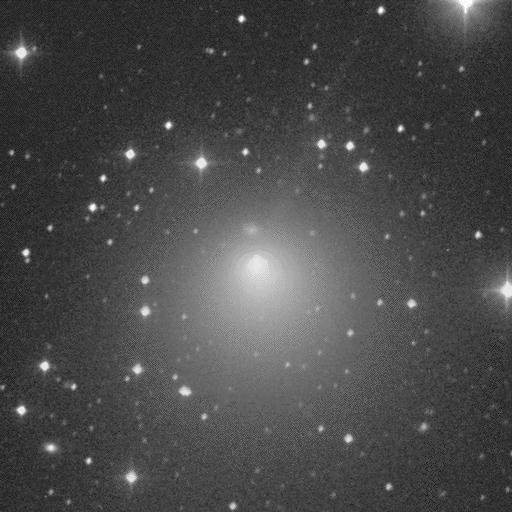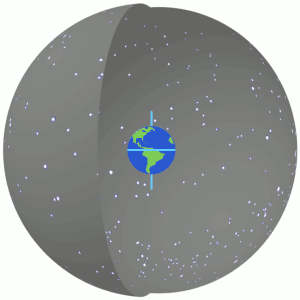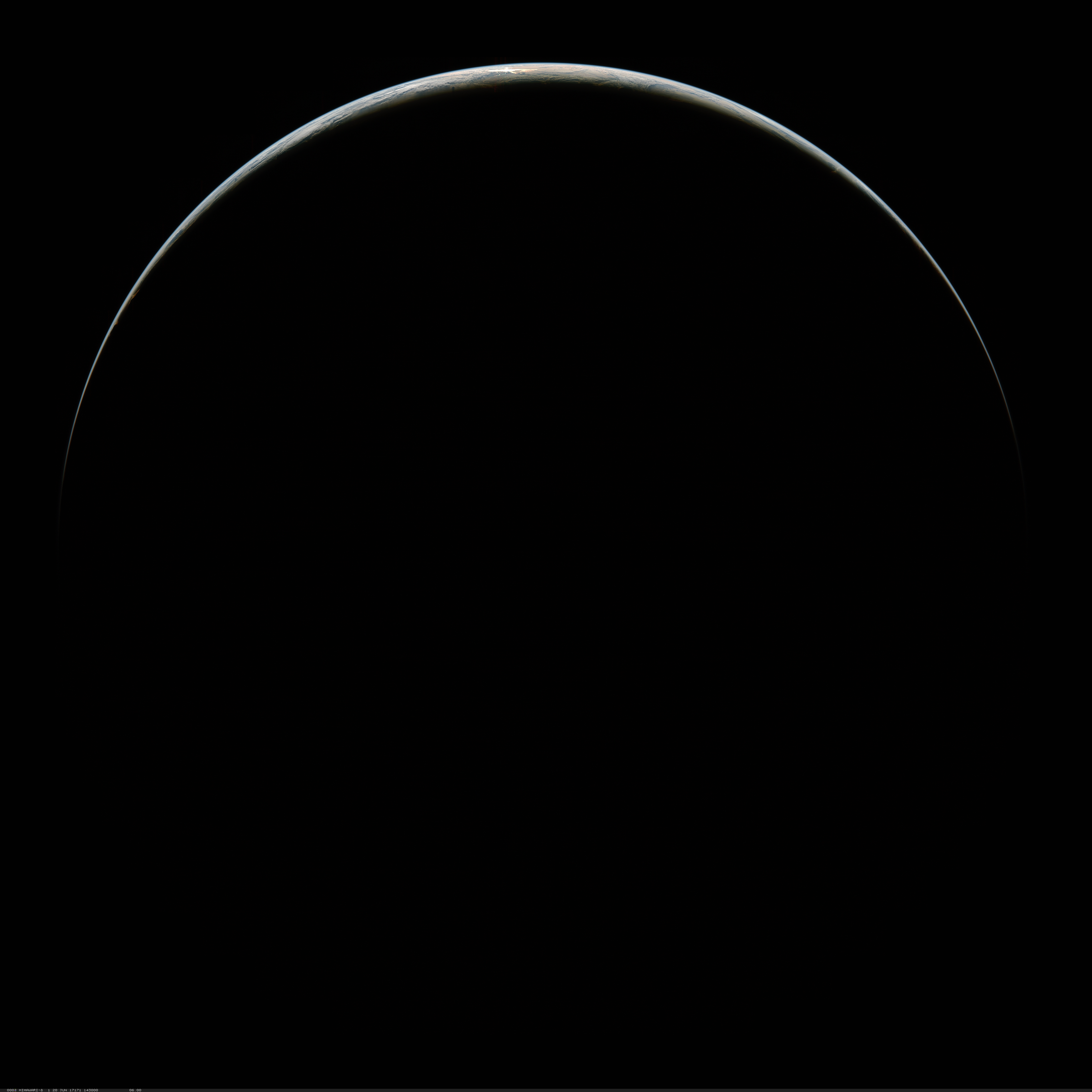|
Beta Taurids
The Beta Taurids (β–Taurids) are an annual meteor shower belonging to a class of "daytime showers" that peak after sunrise. The Beta Taurids are best observed by radar and radio-echo techniques. The Beta Taurids are normally active from June 5 to July 18. They emanate from an average radiant of right ascension 5h18m, declination +21.2 and exhibit maximum activity around June 28–29 (Solar Longitude=98.3 deg). The maximum hourly rate typically reaches about 25 as seen on radar. Non-radio observers are faced with a very difficult prospect, because the Beta Taurid radiant is just 10–15 degrees west of the Sun on June 28. These Beta Taurids are the same meteoroid stream as the Taurids (which form a meteor shower in late October). The Earth intersects this stream of debris twice, once in late October and once in late June, forming two separate meteor showers. However, because the October event occurs at night, it is far more visible and better known than the Beta Taurids, whic ... [...More Info...] [...Related Items...] OR: [Wikipedia] [Google] [Baidu] [Amazon] |
2P/Encke
Comet Encke , or Encke's Comet (official designation: 2P/Encke), is a periodic comet that completes an orbit of the Sun once every 3.3 years. (This is the shortest period of a reasonably bright comet; the faint main-belt comet 311P/PanSTARRS has a period of 3.2 years.) Encke was first recorded by Pierre Méchain on 17 January 1786, but it was not recognized as a periodic comet until 1819 when its orbit was computed by Johann Franz Encke. Like Halley's Comet, it is unusual in its being named after the calculator of its orbit rather than its discoverer. Like most comets, it has a very low albedo, reflecting only 4.6% of the light its comet nucleus, nucleus receives, although comets generate a large coma (cometary), coma and tail that can make them much more visible during their perihelion (closest approach to the Sun). The diameter of the nucleus of Encke's Comet is 4.8 km. Discovery As its official designation implies, Encke's Comet was the first periodic comet discovered af ... [...More Info...] [...Related Items...] OR: [Wikipedia] [Google] [Baidu] [Amazon] |
Ecliptic
The ecliptic or ecliptic plane is the orbital plane of Earth's orbit, Earth around the Sun. It was a central concept in a number of ancient sciences, providing the framework for key measurements in astronomy, astrology and calendar-making. From the perspective of an observer on Earth, the Sun's movement around the celestial sphere over the course of a year traces out a path along the ecliptic against the fixed stars, background of stars – specifically the Zodiac constellations. The planets of the Solar System can also be seen along the ecliptic, because their orbital planes are very close to Earth's. The Moon's orbital plane is also similar to Earth's; the ecliptic is so named because the ancients noted that eclipses only occur when the Moon is crossing it. The ecliptic is an important Plane of reference, reference plane and is the basis of the ecliptic coordinate system. Ancient scientists were able to calculate Earth's axial tilt by comparing the ecliptic plane to that of ... [...More Info...] [...Related Items...] OR: [Wikipedia] [Google] [Baidu] [Amazon] |
Meteor Showers
A meteor shower is a celestial event in which a number of meteors are observed to radiate, or originate, from one point in the night sky. These meteors are caused by streams of cosmic debris called meteoroids entering Earth's atmosphere at extremely high speeds on parallel trajectories. Most meteors are smaller than a grain of sand, so almost all of them disintegrate and never hit the Earth's surface. Very intense or unusual meteor showers are known as meteor outbursts and meteor storms, which produce at least 1,000 meteors an hour, most notably from the Leonids. The Meteor Data Centre lists over 900 suspected meteor showers of which about 100 are well established. Several organizations point to viewing opportunities on the Internet. NASA maintains a daily map of active meteor showers. Historical developments A meteor shower in August 1583 was recorded in the Timbuktu manuscripts.Abraham, Curtis"Stars of the Sahara" ''New Scientist'', issue 2617,15 August 2007, page 39–41 In ... [...More Info...] [...Related Items...] OR: [Wikipedia] [Google] [Baidu] [Amazon] |
Monthly Notices Of The Royal Astronomical Society
''Monthly Notices of the Royal Astronomical Society'' (MNRAS) is a peer-reviewed scientific journal in astronomy, astrophysics and related fields. It publishes original research in two formats: papers (of any length) and letters (limited to five pages). MNRAS publishes more articles per year than any other astronomy journal. The learned society journal has been in continuous existence since 1827 and became online only in 2020. It operates as a partnership between the Royal Astronomical Society (RAS), who select and peer-review the contents, and Oxford University Press (OUP), who publish and market the journal. Despite its name, MNRAS is no longer monthly, nor does it carry the notices of the RAS. In 2024 MNRAS became a purely gold open access journal. History The first issue of MNRAS was published on 9 February 1827 as ''Monthly Notices of the Astronomical Society of London'' and it has been in continuous publication ever since. It took its current name from the second vo ... [...More Info...] [...Related Items...] OR: [Wikipedia] [Google] [Baidu] [Amazon] |
Astronomy And Astrophysics
''Astronomy & Astrophysics (A&A)'' is a monthly peer-reviewed scientific journal covering theoretical, observational, and instrumental astronomy and astrophysics. It is operated by an editorial team under the supervision of a board of directors representing 27 sponsoring countries plus a representative of the European Southern Observatory. The journal is published by EDP Sciences and the current editors-in-chief are Thierry Forveille and João Alves. History Origins ''Astronomy & Astrophysics'' was created as an answer to the publishing situation found in Europe in the 1960s. At that time, multiple journals were being published in several countries around the continent. These journals usually had a limited number of subscribers, and articles were written in languages other than English. They were less widely read than American and British journals and the research they reported had therefore less impact in the community. Starting in 1963, conversations between astronomers from ... [...More Info...] [...Related Items...] OR: [Wikipedia] [Google] [Baidu] [Amazon] |
Gary W
Gary may refer to: *Gary (given name), a common masculine given name, including a list of people and fictional characters with the name Places ;Iran * Gary, Iran, Sistan and Baluchestan Province ;United States *Gary (Tampa), Florida *Gary, Indiana * Gary, Maryland * Gary, Minnesota * Gary, South Dakota *Gary, West Virginia * Gary – New Duluth, a neighborhood in Duluth, Minnesota * Gary Air Force Base, San Marcos, Texas * Gary City, Texas Ships * USS ''Gary'' (DE-61), a destroyer escort launched in 1943 * USS ''Gary'' (CL-147), scheduled to be a light cruiser, but canceled prior to construction in 1945 * USS ''Gary'' (FFG-51), a frigate, commissioned in 1984 * USS ''Thomas J. Gary'' (DE-326), a destroyer escort commissioned in 1943 People *Gary (given name), a common masculine given name, including a list of people and fictional characters with the name *Gary (surname), including a list of people with the name * Gary (rapper), South Korean rapper and entertainer * Gary (Argen ... [...More Info...] [...Related Items...] OR: [Wikipedia] [Google] [Baidu] [Amazon] |
International Meteor Organization
The International Meteor Organization (IMO) was formally founded in 1988 from predecessor gatherings over many years. IMO has several hundred members and was created in response to an ever-growing need for international cooperation on amateur and professional meteor work. The collection of meteor observations by several methods from all around the world ensures the comprehensive study of meteor showers and their relation to comets and interplanetary dust. IMO publishes a bimonthly journal called ''WGN''WGN = "werkgroepnieuws" (Dutch language), in English as "workgroup news". WGN was initially a circular before it became a journal. and holds an annual International Meteor Conference (IMC) in September.IMO website. See also *American Meteor Society The American Meteor Society, Ltd. (AMS) is a non-profit scientific organization established to encourage and support the research activities of both amateur and professional astronomers who are interested in the field of meteor astrono ... [...More Info...] [...Related Items...] OR: [Wikipedia] [Google] [Baidu] [Amazon] |
Right Ascension
Right ascension (abbreviated RA; symbol ) is the angular distance of a particular point measured eastward along the celestial equator from the Sun at the equinox (celestial coordinates), March equinox to the (hour circle of the) point in question above the Earth. When paired with declination, these celestial coordinate system, astronomical coordinates specify the location of a point on the celestial sphere in the equatorial coordinate system. An old term, ''right ascension'' (), "''Ascensio recta'' Solis, stellæ, aut alterius cujusdam signi, est gradus æquatorus cum quo simul exoritur in sphæra recta"; roughly translated, "''Right ascension'' of the Sun, stars, or any other sign, is the degree of the equator that rises together in a right sphere" refers to the ''ascension'', or the point on the celestial equator that rises with any celestial object as seen from Earth's equator, where the celestial equator perpendicular, intersects the horizon at a right angle. It contrasts wi ... [...More Info...] [...Related Items...] OR: [Wikipedia] [Google] [Baidu] [Amazon] |
Summer Solstice
The summer solstice or estival solstice occurs when one of Earth's poles has its maximum tilt toward the Sun. It happens twice yearly, once in each hemisphere ( Northern and Southern). The summer solstice is the day with the longest period of daylight and shortest night of the year in that hemisphere, when the sun is at its highest position in the sky. At either pole there is continuous daylight at the time of its summer solstice. The opposite event is the winter solstice. The summer solstice occurs during the hemisphere's summer. In the Northern Hemisphere, this is the June solstice (20, 21 or 22 June) and in the Southern Hemisphere, this is the December solstice (20, 21, 22 or 23 of December). Since prehistory, the summer solstice has been a significant time of year in many cultures, and has been marked by festivals and rituals. Traditionally, in temperate regions (especially Europe), the summer solstice is seen as the middle of summer and referred to as midsum ... [...More Info...] [...Related Items...] OR: [Wikipedia] [Google] [Baidu] [Amazon] |
Solar Longitude
Solar longitude, commonly abbreviated as Ls (pronounced ''ell sub ess''), is the longitude of the Sun as seen from a given body, i.e. the position of the Sun on the celestial sphere along the orbital plane of that body. It is also an effective measure of the position of the Earth (or any other Sun-orbiting body) in its orbit around the Sun, usually taken as zero at the moment of the vernal equinox. Since it is based on how far the Earth has moved in its orbit since the equinox, it is a measure of what time of the tropical year (the year of seasons) the planet is in, but without the inaccuracies of a calendar date, which is perturbed by leap years and calendar imperfections. Its independence from a calendar also allows it to be used to tell the time of year on other planets, such as Mars. Solar longitude does not increase linearly with time, the deviation being larger the greater the eccentricity of the orbit. For instance, here are the dates for multiples of 90° solar longitude on ... [...More Info...] [...Related Items...] OR: [Wikipedia] [Google] [Baidu] [Amazon] |
Arietids
The Arietids are a strong meteor shower that lasts from May 22 to July 2 each year, and peaks on June 7. The Arietids, along with the Zeta Perseids, are the most intense daylight meteor showers of the year. The source of the shower is unknown, but scientists suspect that they come from the asteroid 1566 Icarus, although the orbit also corresponds similarly to 96P/Machholz. First discovered at Jodrell Bank Observatory in England England is a Countries of the United Kingdom, country that is part of the United Kingdom. It is located on the island of Great Britain, of which it covers about 62%, and List of islands of England, more than 100 smaller adjacent islands. It ... during the summer of 1947, the showers are caused when the Earth passes through a dense portion of two interplanetary meteoroid streams, producing an average of 60 shooting stars each hour, that originate in the sky from the constellation Aries and the constellation Perseus. However, because both const ... [...More Info...] [...Related Items...] OR: [Wikipedia] [Google] [Baidu] [Amazon] |
Zeta Perseids
The Zeta Perseids (ζ–Perseids) are a daylight meteor shower that takes place from about May 20 to July 5. On the peak date of June 13, the radiant is only 16 degrees from the Sun. The shower was discovered at Jodrell Bank Observatory in 1947 using radio equipment. The Zeta Perseids and Beta Taurids are both probably associated with the Taurid Complex of meteor showers. The Arietids The Arietids are a strong meteor shower that lasts from May 22 to July 2 each year, and peaks on June 7. The Arietids, along with the Zeta Perseids, are the most intense daylight meteor showers of the year. The source of the shower is unknown, bu ... and Zeta Perseids maxima tend to blend into one another. References Meteor showers May June {{meteoroid-stub ... [...More Info...] [...Related Items...] OR: [Wikipedia] [Google] [Baidu] [Amazon] |




